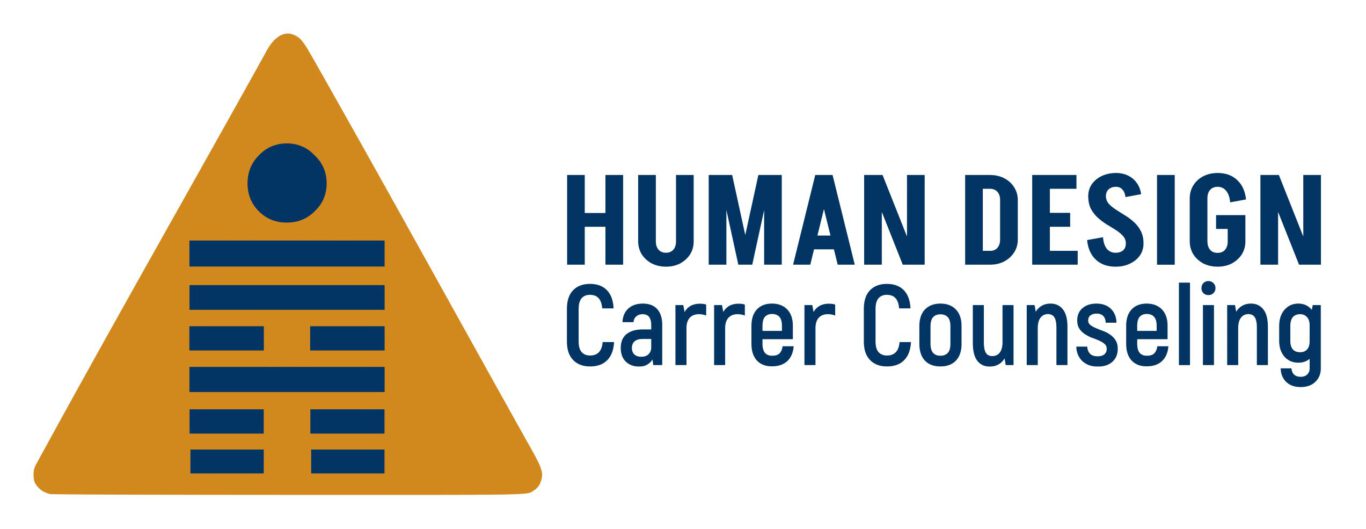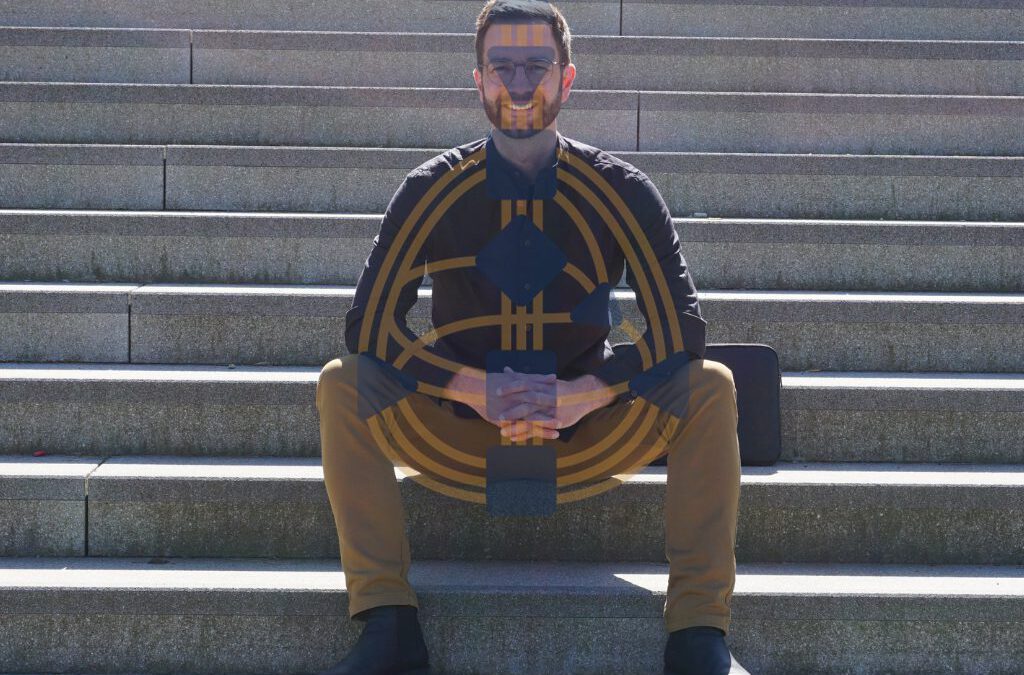Dive into the fascinating world of Human Design Centers. The centers are the basic framework that reveals the secrets of your personality. In this blog post, I want to introduce you to the centers of the Human Design Chart, which illuminate both your strengths and your potential areas for growth.
Discover how the defined and undefined centers and their gates in your Human Design Chart influence your impact in the work world and how you can use these insights to lead an authentic professional life.
The Centers of the Human Design Chart
When you look at your Human Design Chart, the first thing you probably notice are the Human Design Centers. These are the nine triangle, diamond, or square shapes that are either colored or white. The colored Centers are the Defined Centers. The white Centers are called Undefined Human Design Centers. You can get your personal Human Design Chart for free by entering your birth data into my Human Design Calculator. Just so you know: There I also offer a Human Design Chart analysis with reference to your professional life.
Now back to the Centers. Each of the Human Design Centers is a node (similar to the chakras in yoga) that contains a specific frequency or energy information system. Each Center has an important function. Whether the Human Design Centers are Defined or Undefined says a lot about us as a person. Basically, a lot of it is about the difference between effect and perception.
In the job context, I find again and again that strengths, weaknesses and especially interests but also conditioning and beliefs can be derived from the Centers. Of course always in the context of the client and his body perception. Which Center is Defined and which is Undefined and how the connections run also determines to which of the five Human Design Types a person belongs.
Undefined and Defined Centers
Defined and Undefined Human Design Centers reveal to us in which aspects we are “firmly in the saddle” and where we increasingly perceive and let things from the outside get to us, or that have an attractive effect on us. We are often attracted to what we ourselves do not embody.
Human Design Centers – Defined
The Defined Centers (colored) have a consistent function. Such aspects are “set in stone” so to speak. We can rely on this because there is a steady energy within the Defined Centers.
Human Design Centers – Undefined
With Undefined Centers, the energy related to the specific characteristic is not constantly present. We are open to influences from outside, especially from people with a corresponding Defined Center. Undefined Centers make us flexible and empathic. Completely open Centers, which have absolutely no docked gate (hanging gate), are particularly susceptible to conditioning and are called open Centers.
Human Design Motor Centers
At a deeper level of Human Design, there are different Human Design Centers, four of which are called Motor Centers. These motor centers are sources of life energy, each in its own way.
The Sacral Center as a Motor Center
The defined sacral center symbolizes enduring energy. It provides sustained energy, especially when you are engaged in activities that bring you joy. The work is fulfilling and this motor automatically recharges itself. The sacral center regenerates itself, especially after a long, fulfilling day, when you come to rest.
The Root Center as a Motor Center
The root center represents the starting energy. With a defined root center, you will find it easier to get up in the morning. It motivates and drives you. On the downside, it can lead to self-stress (defined) or you are easily stressed by others (undefined).
The Solar Plexus center as a Motor Center
Emotions are energy in motion that must be released at some point. Every emotion has its function, and even unpleasant feelings provide energy to move forward in life.
The Heart Center as a Motor Center
Among other things, the heart center is a symbol of willpower. This motor is used to fight for one’s own will, to assert it and to gain influence.
Awareness Centers
In addition to the Motor Centers, there is another type of Center, the Awareness Centers. These include the Spleen Center, the Ajna Center, and the Solar Plexus Center (which is also an engine Center).
Each of these Human Design Centers focuses on a particular type of awareness and on energetic processing. The Spleen Center (triangle on the left) has body awareness and is focused on body survival (survival intelligence). The Ajna Center (lower triangle in the head) has mental awareness and is concerned with mental intelligence. The emotional solar plexus (triangle on the right) also has mental awareness and deals with Emotional Intelligence.
The energies of the Human Design Centers in the working world
Human Design Centers: The Head Center
The head Center represents inspiration and inventiveness. The Head Center is also a Pressure Center. If the mental pressure becomes too great, headaches can be the result. 30 percent of humanity have a Defined head Center, 70 percent have an Undefined Head Center. The connected gland of the Head Center is the pineal gland.
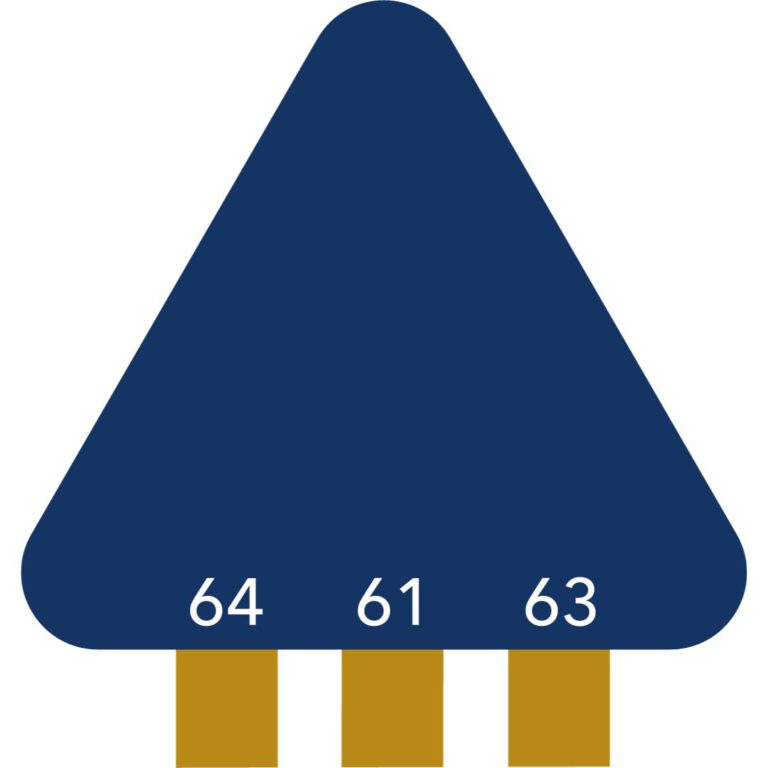
Human Design Centers: The Head Center
Defined Head Center
If you want to find solutions and create ideas from within yourself on the job, it’s beneficial to have a Defined head. As a creative head in the company, you can benefit from this trait and become the source of ideas and inspiration. You can rely on your head, but you also need team players with diverse Designs to help you implement your ideas.
However, there is also a flip side to the coin, because sometimes ideas and approaches go in circles and never come to rest. This endless loop can drive you crazy. You should therefore use techniques like meditation, yoga or yoga nidra to interrupt these thoughts.
Undefined Head Center
If you have an Undefined Head Center, it’s usually difficult for you to have consistent access to your thought processes and remember things well. Even if you prepare intensively for a meeting, it may seem like your head is empty just beforehand. However, you can be confident that you will recall the right information at the right time.
With an Undefined Head Center, you are also receptive to your colleagues’ thoughts and ideas, and you sometimes can’t distinguish which ideas are really your own and which are not. It is important to mirror ideas of others in an appreciative way and to be flexible in your thought processes. Because of your flexible mind and deep understanding of others’ ideas, you are able to think creatively and innovatively.
The Human Design Gates of the Head Center
Human Design Gate 64
Gate 64 – Reflection / Completion: You are under constant mental pressure to reflect on past experiences and discover their overall meaning – a cycle that creates confusion until the images are clarified.
Human Design Gate 61
Gate 61 – Exploration / Inner Truth: Human Design Gate 61 enables you to become aware of universal principles of life and creates the mental pressure to recognize absolute truths, to mentally explore life and the unknown, and to share the findings to inspire others.
Human Design Gate 63
Gate 63 – Verification / After Completion: Gate 63 is the mental pressure to verify concepts to ensure a secure future. You possess a skeptical mind that harbors doubt and requires logical clarity, facts, reasoning, and evidence to identify future-proof patterns.
Human Design Centers: The Ajna Center (Mind)
The Ajna Center represents the mind and refers to the processing of information, conceptual thinking, and structure. The Ajna Center is one of the three Awareness Centers , along with the Spleen Center and Solar Plexus Center. Approximately 47 percent of humanity has a Defined Ajna Center, while 53 percent have an Undefined Center. The connected gland to the Ajna Center is the pituitary gland or pituitary gland.
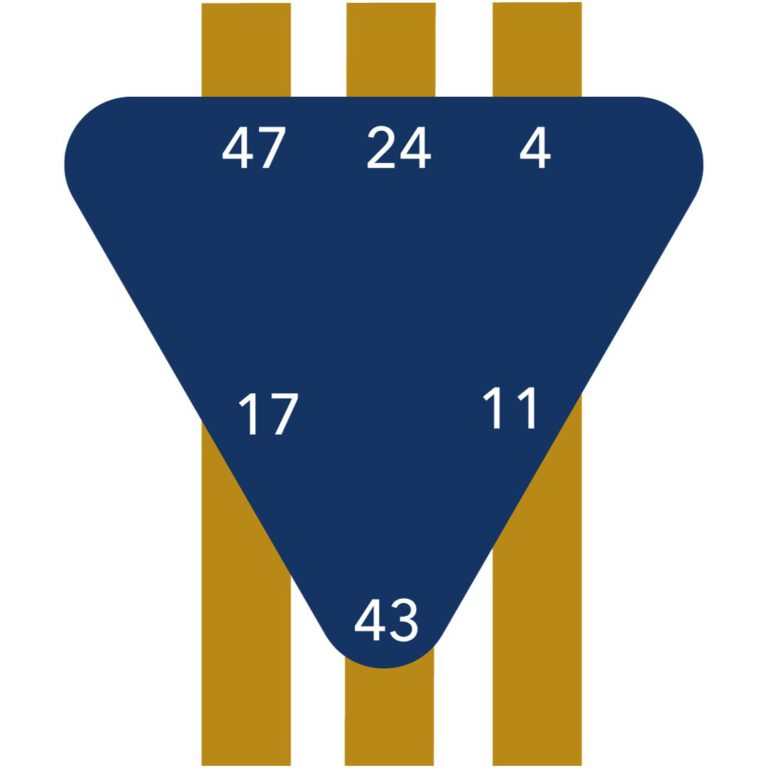
Human Design Centers: The Ajna Center
Defined Ajna Center
If you have a Defined Ajna Center, you are an analyst by nature. You are able to process and recall numbers, data and facts at any time, which often forms the basis for your decisions. However, it is important to understand that decisions should not be made by the mind alone, but by our inner authority.
If you rely solely on your mind, you are thinking purely rationally and may make decisions that do not necessarily contribute to your well-being. That’s why it’s important to also open up to your body sensations and listen to your gut, even if it doesn’t seem logical at first glance.
By relying on your inner authority and incorporating your gut feeling into your decision making, you can make decisions that truly suit you and move you forward on your life’s journey. It is important to understand that you are not only a rational analyst, but also an intuitive feeler who can use your inner wisdom to make the right decisions.
Undefined Ajna Center
If you have an Undefined Ajna Center, you can’t process information in a consistent way. You have a hard time focusing on your own mind. Instead, you can mirror the thoughts and ideas of your colleagues and superiors to ensure that projects and processes don’t get bogged down.
For you, there isn’t THE truth, even if you’ve sifted through many perspectives. Therefore, it is important to give yourself room to consider different scenarios in parallel as options. It’s also hard for you to answer spontaneously. It’s better to say “I don’t know right now” than to give in to pressure and just say something that hasn’t been thought through.
You should take the pressure out and take time to think or research. It’s okay if you don’t have an answer right away. Take time to gather all the information and then make an informed decision.
The Human Design Gates of the Ajna Center
Human Design Gate 47
Gate 47 – Interpretation / Distress: Gate 47 creates mental pressure within you to understand the past, it causes you to piece together fragments of memory to make sense of it, which can be helpful in coming to terms with your own past as well as collective experiences.
Human Design Gate 24
Gate 24 – Introspection/Return: Gate 24 gives you the ability to question yourself intensely and look deeply within yourself, allowing you to discern truths and find rational answers by mentally combing through questions, leading to deep insights and significant progress on your path to self-knowledge.
Human Design Gate 4
Gate 4 – Developing Your Own Theories / Thesis Formation / Youthful Foolishness: Gate 4 gives you the ability to find logical solutions to various problems through your strong imagination and constant desire for answers, allowing you to offer unsolicited solutions and generate new ideas for a better future.
Human Design Gate 11
Gate 11 – Ideas / Peace: Through Gate 11 you have the talent to develop creative and new ideas from your experiences and reflections, which, even if not necessarily implemented, serve as inspiration for others, with the aim of improving social conditions.
Human Design Gate 43
Gate 43 – Insight / Breakthrough: With Gate 43, your inner voice suddenly and unexpectedly offers you profound insights that can lead to innovative ideas and help you understand things for yourself, regardless of other opinions.
Human Design Gate 17
Gate 17 – Opinions / Succession: You have the ability to process information logically to form informed opinions, anticipate future scenarios, and organize complex systems and structures.
Human Design Centers: The Throat Center
At its core, the Throat Center represents manifestation (realization of action), communication, and self-expression. It is through the Throat that we express ourselves. We speak our thoughts and express our feelings. Timing is the key. We need time to inform them that this is right for us. And, perhaps most importantly, when we put our words into action, we create reality. Approximately 72 percent of humanity has a Defined Throat Center, while 28 percent have an Undefined Throat Center. The connected glands of the Throat Center are the thyroid and parathyroid glands.
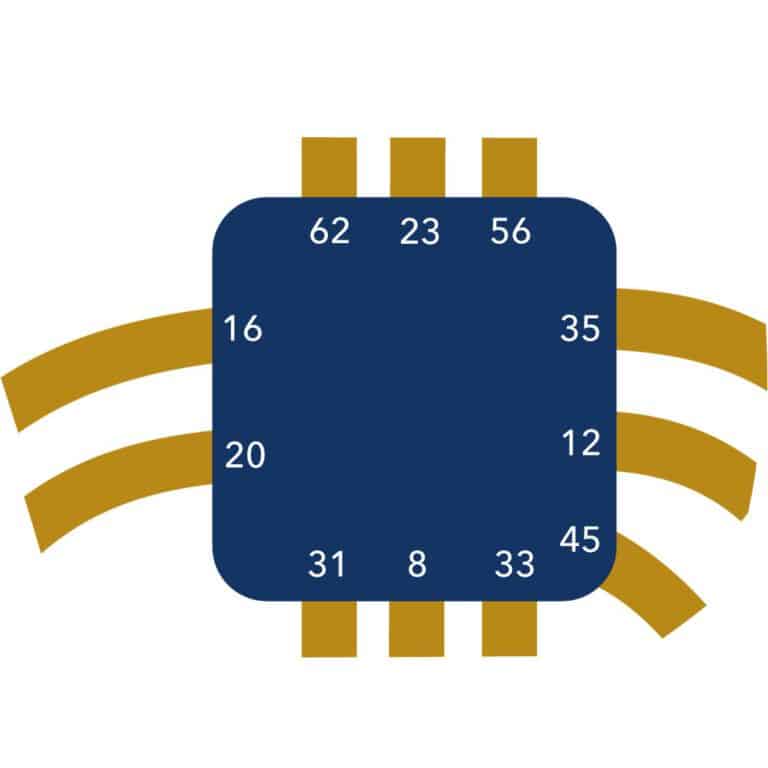
Human Design Centers: The Throat Center
Defined Throat Center
As a person with a Throat Center connected to various centers and channels, you define the way you bring your thoughts and ideas to the world. Perhaps your colleagues have a particular preference for your voice and style of speech.
For example, if your Throat Center has a Defined channel to the Ajna Center, your statements will come primarily from your mind. The connections to other Human Design Centers affect the quality of your communication. If you have a connection to the Heart Center, you are naturally a born leader (taking into account other aspects of your Human Design Chart, of course).
Undefined Throat Center
If you have an Undefined Throat Center, it can be difficult to see the benefits. It can feel like no one is really listening or you’re afraid to speak because you don’t know what to say. This can be especially problematic in a work environment. The trick is to be passive and speak when we are called upon to do so.
With an Undefined Throat, we have the flexibility to speak in many different voices depending on the issues being addressed. The different gates in our Human Design Chart also determine which topics we will and will not pick up. We are also very good listeners and are good at judging when it is appropriate to say something.
The Human Design Gates of the Throat Center
Human Design Gate 62
Gate 62 – Details / Precision / Small Overweight: Through Gate 62, you have an eye for detail and use it to organize complex issues and express them precisely so that others understand you and are convinced by your statements.
Human Design Gate 23
Gate 23 – Clarity / Fragmentation: Through Gate 23 you have the ability to communicate your individual knowledge clearly, with timing and context being crucial so that your knowledge can be understood and used by others.
Human Design Gate 56
Gate 56 – Stimulation / Wanderer: Through Human Design Gate 56, you are a fascinating storyteller who knows how to evoke and direct emotions through language, and your lively and enriched narratives capture the attention and interest of your listeners.
Human Design Gate 35
Gate 35 – Progress: With your sense of impending change and your restless nature, you are an engine of progress with Gate 35, always ready to try new things and to discover and develop your many talents.
Human Design Gate 12
Gate 12 – Expressing Feelings / Appropriateness / Stocking: Through Human Design Gate 12 you have the need and the talent to express your feelings appropriately, which leads to a good understanding and enables you to communicate yourself benevolently, even when you are angry or upset.
Human Design Gate 45
Gate 45 – Collection: Through Gate 45, you are like a leader who takes care of their tangible and intangible needs (e.g., education), distributes resources skillfully, and uses a combination of generosity and financial wisdom to maximize a community’s potential for prosperity and help others succeed as well.
Human Design Gate 33
Gate 33 – Prudence / Retreat: Through Gate 33, you need periods of retreat to process and learn from what you have experienced, with your cleverness and desire to retreat helping you to effectively use and/or share your insights with others later.
Human Design Gate 8
Gate 8 – Contribute to Groups / Promotion / Cohesion: Through Gate 8, you bring creative and original contributions to groups, encourage sharing, and present ideas effectively, showing off your own style.
Human Design Gate 31
Gate 31 – Leadership / Impact / Influence: Through Gate 31, you have the gift of leading others and effectively use your expressions to communicate strategies and exert influence, bringing structure and order to the group and being most effective when formally appointed as a leader.
Human Design Gate 20
Gate 20 – Presentness in the Now / Presence / Contemplation: Through Gate 20 you develop your potential by being present in the present moment and letting go of the past and future, and although this state of “now” brings deep peace, you often feel impatience.
Human Design Gate 16
Gate 16 – Enthusiasm / Identification / Enthusiasm: Through Gate 16, you steadily refine your talents and abilities through enthusiasm and dedication until you bring them to perfection (e.g., like a professional athlete).
Human Design Centers: The G Center
The G Center stands for our identity, for our life direction, as well as for self-love and authenticity. Approximately 57 percent of humanity has a Defined G Center, 43 percent have an Undefined G Center. The organ connected to the G Center is the liver.
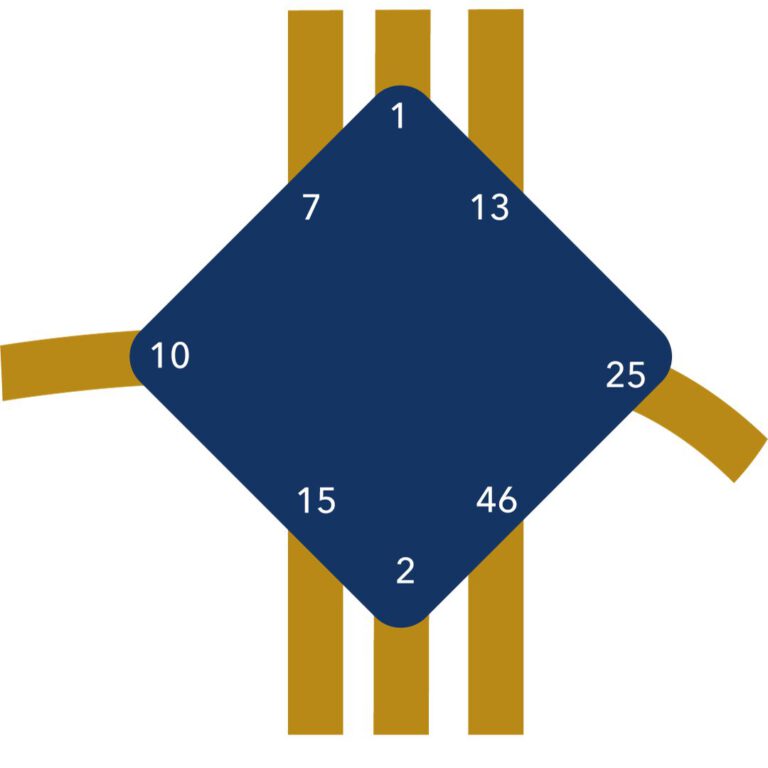
Human Design Centers: The G-Center
Defined G Center
When you have a Defined G Center, you inspire your teammates with your clear life direction and purpose. You know who you are and what you want to achieve and rarely worry about your life path. Your G Center acts as an inner compass that also helps you in your professional career. Your colleagues and co-workers recognize your stability and look to you for guidance.
However, there are also challenges that come with having a Defined G Center. You may assume that your colleagues will automatically follow your lead. But it’s important to keep in mind that everyone has their own gates and motivations. Therefore, it makes sense to also consider the perspectives and needs of your team members and include them in decision-making processes.
Undefined G Center
When your G Center is Undefined, you are very adaptable and your life can be very varied. However, it can be difficult to find a clear direction because you don’t have a solid inner compass. You sometimes feel lost and are easily influenced by others if you are not careful. Therefore, you should pay attention to the environment in which you move. If you don’t feel comfortable in a professional environment, you should look for a new environment where you can express yourself authentically.
The Human Design Gates of the G Center
Human Design Gate 7
Gate 7 – Strategy / The Army: Through Gate 7, you have the ability to radically influence the future by developing strategies and charting new paths and/or breaking down old structures, always needing the collective behind you to effectively lead and guide.
Human Design Gate 1
Gate 1 – Creativity / Originality / Creation: Through Gate 1, creativity emerges in quiet moments, expressing itself in unpredictable ways; although you want to be noticed by others, you strive for originality rather than material gain or external recognition.
Human Design Gate 13
Gate 13 – Mindfulness / Communion with People: Through Gate 13 your openness and mindfulness, people entrust you with their stories and secrets as you unconsciously preserve these experiences, making you a ‘chronicler of life’ who demonstrates a talent for evaluation in your profession.
Human Design Gate 25
Gate 25 – Naturalness / Innocence: Through Gate 25 you carry a childlike innocence and naturalness, often speaking spontaneously and with unconditional love, allowing you to heal your wounds and those of others and return to a state of purity.
Human Design Gate 46
Gate 46 – Striving Ahead / Open Mindedness / Soaring: Through Gate 46, you have an intuitive sense of timing and opportunity, are always in the right place at the right time, and skillfully take advantage of opportunities, while you treat your body with care and concern and excel at work, especially in coordination.
Human Design Gate 2
Gate 2 – Inner Guidance / Intuition / The Receiving: You possess a deep intuitive connection to your higher self through Gate 2, which gives you guidance on your life’s path while also giving you the ability to counsel others on their life’s journey, excelling in a professional context especially in focusing.
Human Design Gate 15
Gate 15 – Flexibility / Humility: Through Gate 15 you are flexible and adaptable, deal calmly with extreme situations, show tolerance towards people’s differences, and thanks to this versatility you are also professionally able to master different tasks, which makes you particularly suitable for changing positions.
Human Design Gate 10
Gate 10 – Authenticity / Appearance: You express yourself authentically through Human Design Gate 10 and inspire others to show themselves authentically as well, with your inner joie de vivre shaping you and not conforming to the expectations of others.
Human Design Centers: The Heart Center
The Heart Center (also called will Center or ego Center) represents willpower, self-esteem and self-confidence. Only 37 percent of the population has the privilege of having a Defined Heart Center. This leaves 63 percent with an Undefined Heart Center. The connected glands/organs to the Heart Center are the Heart, gallbladder, stomach and thymus gland.

Human Design Centers: The Heart Center
Defined Heart Center
As someone with a Defined Heart Center, you are able to carry out your will with determination and assertiveness. Your colleagues and co-workers appreciate your reliability and can depend on you. However, you may underestimate your own willpower and not fully utilize it.
As a Defined Heart, you have the ability to strengthen and inspire the willpower of people with an Undefined Heart Center. You are also able to succeed in competitive situations as long as you stick to your personal strategy and authority.
Undefined Heart Center
When your Heart Center is Undefined, your willpower is not always available to you. Even if you make an effort to strengthen your willpower, it does not always bring the desired success. Negative feedback can hurt you badly if you have an Undefined Heart. It’s important to keep promises and it’s part of good behavior. But sometimes it can be hard to keep promises with an Undefined Heart. That’s why you should be careful about when you over-commit to others.
You don’t have to prove yourself through work performance, either to yourself or to others. Your self-worth does not depend on your willpower. Rather, it is a matter of listening to your authority and going your way rather than frantically imposing your will.
The Human Design Gates of the Heart Center
Human Design Gate 21
Gate 21 – Control / Authority / Biting Through: You strive for independence by seeking control over your own decisions as well as the ability to meet both your own needs and those of the community.
Human Design Gate 40
Gate 40 – Aloneness / Resolve / Liberation: You work hard and efficiently on your own, needing a good work-life balance and time to yourself to maintain your performance and develop until you reach your full potential.
Human Design Gate 26
Gate 26 – Tactics / Great Taming Power: You have the gift of achieving maximum results with minimal effort and persuasively influencing others. This potential enables you to rise in the hierarchy, but also carries the danger of overestimating yourself.
Human Design Gate 51
Gate 51 – Competitiveness / Bravery / the Exciting: This gate gives you the courage to compete with others and stay one step ahead of them, while being able to adjust and react to unexpected events. Your determination to take unconventional paths and your desire to dominate a (work) field strengthen you.
Human Design Centers: The Sacral Center
The Sacral Center, with its nine gates, is the strongest engine in the Human Design Chart. It is the Center for activity and long-lasting energy. It is also our inner GPS system in terms of yes/no decisions (Human Design Authority). Approximately 70 percent of us have a Defined Sacral Center, 30 percent have an Undefined Sacral Center. The connected glands to the Sacral Center are the testes or ovaries. Whenever the Sacral Center is Defined, the Human Design type is automatically a Generator or Manifesting Generator.
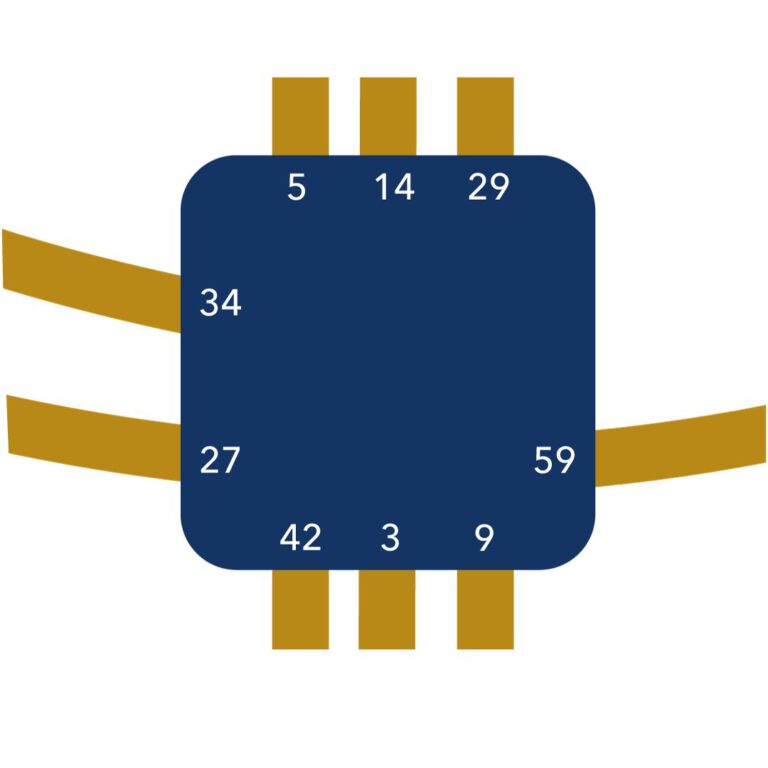
Human Design Centers: The Sacral Center
Defined Sacral Center
As a person with a Defined Sacral Center, you have tremendous energy. You are the worker bee in the office and can carry others along with your energy. But to realize your full potential, you also need to feel joy at work. So it’s important to find an activity that brings you joy. After a fulfilling day at work, you should fall into bed in the evening, completely exhausted, so that you can fully recharge your batteries during your night’s rest. This way you can start the next morning with a full battery and joy.
The gates or channels that emanate from your Sacral Center determine where you focus your energy. Your Sacral Center responds to what shows up in your environment with a yes or no. It’s your gut feeling that tells you whether or not you want to take that job, for example.
Undefined Sacral Center
As an Undefined Sacral Center, you must learn to be skillful with your energy. Your energy comes and goes and is therefore not constantly available as it is with a Defined Center. This increases the risk of suffering a state of exhaustion or burnout. Therefore, you need allies to get your business and project ideas on the road and compensate for this weakness. Your strength lies rather in delegating and optimizing.
For you, closely timed relaxation phases are more important than for Defined Sacral Centers. You may allow yourself rest and relaxation in between without having a guilty conscience. Beliefs like “You have to work a lot to be successful” or “No pain, no gain” are a real danger for you and you should distance yourself from them. As an Undefined Sacral type, you are either a manifestor, projector or reflector.
The Human Design Gates of the Sacral Center
Human Design Gate 59
Gate 59 – Intimacy / Dissolution: Gate 59 is your life force for intimacy and the ability to build deep bonds, both in procreation and in other social relationships where the potential lies in intimacy.
Human Design Gate 9
Gate 9 – Concentration on Details / Focus / Small Taming Power: Gate 9 gives you the ability to focus on details and use your energy efficiently through perseverance and concentration to achieve your goals.
Human Design Gate 3
Gate 3 – Change / initial difficulties: Through Gate 3, your power to change is the ability to create new things and move through initial confusion to enable synergy and development.
Human Design Gate 42
Gate 42 – Growth/Multiplication: Through Human Design Gate 42 you have the life force for growth and the ability to complete things to allow for new cycles by focusing on completing processes and being open to new things.
Human Design Gate 27
Gate 27 – Caring / Corner of the Mouth: Through Gate 27 you have the ability to care, starting with caring and compassion for yourself and expanding to caring for others.
Human Design Gate 34
Gate 34 – Power / Strength / Great Power: Gate 34 represents the energy that serves to affirm yourself and express your uniqueness and power.
Human Design Centers: The Solar Plexus Center
The Solar Plexus Center is where we process our emotions. This is where we experience our passions, desires, moods and sensitivities. This Center also allows us to connect with the social intelligence of those around us. Interestingly, only about 53 percent of people have a Defined Solar Plexus Center, while for 47 percent this Center is Undefined.

Human Design Centers: The Solar Plexus Center
On the physical level, the Solar Plexus Center is connected to various organs, such as the kidneys, lungs, pancreas, prostate, and nervous system. This connection shows how closely our physical and emotional well-being are linked.
Defined Solar Plexus Center
You have a constant connection to your own emotions. You are consistently in a certain level of emotion, even if you are not aware of it. However, you should be aware that you are not your emotions, any more than you are your thoughts. You can mediate conflicts by not taking in the emotions of the parties to the conflict and thus maintaining a healthy distance.
The Solar Plexus Center contains the mechanics of what in Human Design is called an emotional wave. If you have an emotional authority, for example, you have to go through a wave to make the right decision. If you have a Defined emotional Center, your authority is automatically an emotional authority. By focusing on your emotional Center and being aware of its impact on your body, you can improve your inner strength and resilience.
Undefined Solar Plexus Center
If you have an Undefined emotional Center, you do not possess the emotional wave described above. However, because of your openness, you are very empathic and often take in the feelings of others. This can confuse you and make you think that you are to blame for others’ feelings. Therefore, it is important to know which feelings are your own and which belong to the people around you.
A job that requires you to act as an arbitrator or judge probably suits you less. It can be difficult to distinguish between your own feelings and those of others and thus make a fair decision.
The Human Design Gates of the Solar Plexus Center
Human Design Gate 6
Gate 6 – Prudence / Strife: Gate 6 possesses the emotional intelligence that determines whether or not you are open to intimacy, regulates the flow of your feelings and influences your emotional balance.
Human Design Gate 37
Gate 37 – Friendship / Loyalty / Kinship: Gate 37 is your capacity for emotional connection and loyalty in relationships such as friendship, marriage and community where mutual support is important.
Human Design Gate 22
Gate 22 – Mood swings / Mood / Grace: Gate 22 is your emotional mood, which can be either social or non-social depending on your state of mind.
Human Design Gate 36
Gate 36 – Touchability / Eclipse: Gate 36 contains the emotional sensitivity that takes you through extreme emotional experiences, from deep crises to the highest heights, turning inexperience into experience.
Human Design Gate 49
Gate 49 – Principles / Upheaval: Gate 49 determines your emotional stability, which is based on principles and sets the rules for living together in a community.
Human Design Gate 55
Gate 55 – Abundance: Gate 55 expresses your capacity for emotional abundance, which leads you through deep emotional highs and lows, always in search of the ideal emotional state.
Human Design Gate 30
Gate 30 – Longing for new experiences / fieriness / the clinging: Through Human Design Gate 30, your emotional fire for new experiences is characterized by a deep longing and the courage to face the unknown.
Human Design Centers: The Root Center
The Root Center is a pressure Center and has nine gates. Whether our Root Center is Defined or Undefined determines how we can process and control strong pressure. We have the task of figuring out how to use this pressure to our advantage rather than being used by it. Skillfully managing Root energy can have a huge impact on our work, relationships and health. Sixty percent of us have a Defined Root Center, and 40 percent have an Undefined Root. The Root Center is connected on a physical level to the adrenal glands.
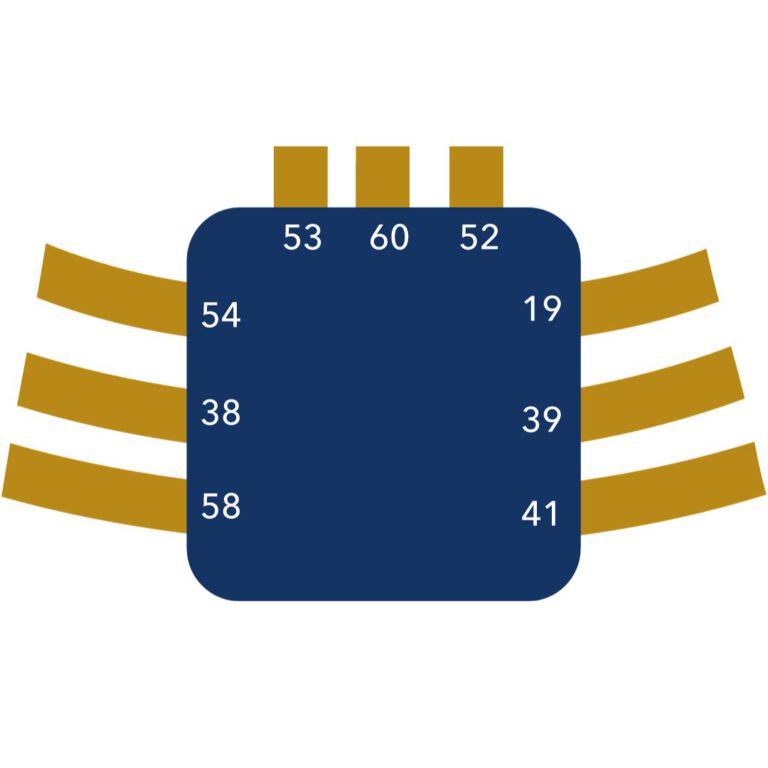
Human Design Centers: The Root Center
Defined Root Center
If you have a Defined Root, you are basically a grounded person. You get out of bed quite well in the morning and have a high tolerance level for stress and pressure. Thanks to your Root Motor, you are ready for action.
However, there are two important things you should know about your Root Motor function. First, this Motor is not always on; it pulses on and off. Therefore, even though you have constant access, you depend on proper timing. For another, you should realize that your drive particularly targets the channel that provides definition to the Root.
It is important to understand how your Root Motor works and which channels affect it. Understanding this will allow you to reach your full potential and capitalize on your strengths. Remember that your Defined Root provides you with a strong drive. Still, make sure you take enough breaks to recover.
Undefined Root Center
When you have an Undefined Root, you are driven by the adrenalized energy of your work environment. Once you realize that this pressure is not coming from yourself, you can find clever ways to deal with it. It’s important to understand that your Undefined Root makes you more susceptible to exhaustion and makes it difficult for you to launch ventures.
If you know that you are absorbing outside pressure, you can take steps to avoid it. It’s important to protect yourself and keep your energy up by taking purposeful breaks and paying attention to your limits.
The Human Design Gates of the Root Center
Human Design Gate 53
Gate 53 – Starting something new / Readiness / Development: With the energy to set new cycles in motion and to patiently and structuredly drive developments forward, Gate 53 is the engine for new beginnings.
Human Design Gate 60
Gate 60 – Further development / realism / limitation: Gate 60 gives you the drive to accept limits and preserve what already exists, while at the same time providing the basis for sudden and fundamental innovations, Creative power results from melancholy.
Human Design Gate 52
Gate 52 – rest / stillness: Gate 52 makes it possible to keep calm in inaction and to concentrate on one thing and focus energies in passive tension.
Human Design Gate 19
Gate 19 – Needs / Approach: Gate 19 makes it possible to secure basic needs such as food or emotional closeness.
Human Design Gate 39
Gate 39 – Provocation / Liberation / Obstruction: Gate 39 allows you to become emotionally free by provoking the mind and thus dissolving emotional obstacles.
Human Design Gate 41
Gate 41 – Hope / Mitigation: Gate 41 holds the potential for hopes and aspirations to overcome limitations and represents the desire for new experiences necessary to make progress.
Human Design Gate 58
Gate 58 – Joy of Life / The Cheerful: Gate 58 allows you to enjoy life with light-hearted cheerfulness and joie de vivre, characterized by the desire to improve and perfect things.
Human Design Gate 38
Gate 38 – Tenacity / Perseverance / Opposition: Through Gate 38 you tenaciously defend your integrity and independence and provide the fuel to overcome fears, especially of dying without meaning.
Human Design Gate 54
Gate 54 – Ambition / Ambition / The marrying girl: Gate 54 Striving for advancement and material success in the community, with the goal of increasing social status, including building relationships with influential people.
Human Design Centers: The Spleen Center
The Spleen Center represents safety and health. The Spleen is on guard against possible danger and protects us in acute emergencies. This Center houses our fears of survival. It is there to alert us through intuition that there is a real danger that we must deal with in the here and now.
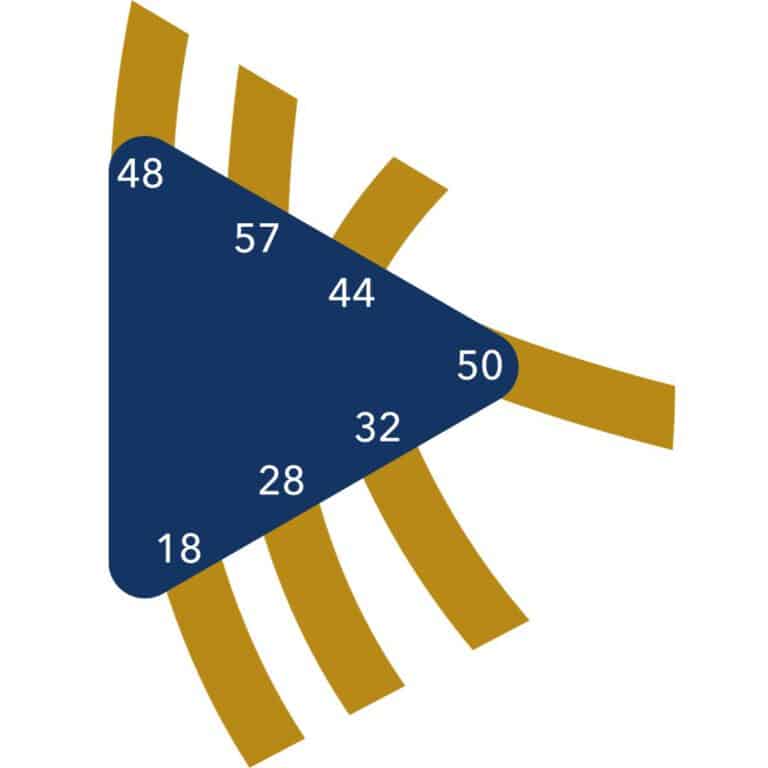
Human Design Centers: The Spleen Center
However, most of our everyday fears are not real threats. They stem from the past. Our ego clings to these fears, nurtures them, keeps them alive, and thus scares us. However, the Spleen Center also contains energy for spontaneity and intuition. 55 percent of us have a Defined Spleen Center, 45 percent have an Undefined Spleen Center. The Spleen Center is physically connected to the lymphatic system and the Spleen.
Defined Spleen Center
You are designed to use your body awareness to be alert to what is happening around you. Your body is designed to react spontaneously to situations. If you listen to your intuition and follow your personal strategy and authority, you can have a vibrant, healthy body with a strong immune system. However, you should not take your health for granted. If you have an Undefined Spleen, a Defined Spleen will give you security. On the other hand, if you don’t listen to your intuition, strategy and authority, you run the risk of burning out.
Undefined Spleen Center
As a person with an Undefined Spleen, you are likely to have a more sensitive body and be more susceptible to illness. You pick up on fears from people around you more quickly, and your Spleen may even amplify those feelings. It’s important to distinguish which fears and anxieties belong to you and which you take on from others so you don’t become too burdened.
Sometimes it can be difficult to let go and let things or people go, but it’s important to let go of them as well so as not to become too burdened. While spontaneity may not be your strong suit, be sure to listen to your intuition and personal strategy, especially in decision-making situations.
The Human Design Gates of the Spleen Center
Human Design Gate 48
Gate 48: Depth / Well: Gate 48 represents the art of survival through preferences and tastes, a source of deep wisdom.
Human Design Gate 57
Gate 57: Clarity / Alertness / The Gentle: Gate 57 is the gate of intuitive awareness, responsible for survival and well-being, focusing on the present to recognize and avoid danger.
Human Design Gate 44
Gate 44: Cooperation / collaboration / accommodation: Gate 44 enables instinctive cooperation, with a sense for helpful cooperation partners and the ability to develop structures based on experience.
Human Design Gate 50
Gate 50: Values / The Crucible: Gate 50 stands for wisdom based on ethics and values, which bundles survival awareness, whereby the assumption of responsibility is central.
Human Design Gate 32
Gate 32: Continuity / Duration: Human Design Gate 32 stands for continuity in the community, with a sense of the true value of people and things and a balance between adaptation and preservation of the traditional.
Human Design Gate 28
Gate 28: Taking Risks / Risk / The Great Overweight: Human Design Gate 28 describes your willingness to take risks in order to experience life and give it meaning, characterized by the intuition to recognize when it is worthwhile to stand firm and take risks.
Human Design Gate 18
Gate 18: Correct / Judgment / Work on the corrupt: Through Human Design Gate 18, you possess the survival instinct through judgment, focusing on improving on mistakes and challenging learned standards and norms to achieve perfection.
Conclusion of the Human Design Centers and the 64 gates
I hope that through this in-depth article you were able to dive into the fascinating world of the 9 Human Design centers and the 64 gates that serve as keys to your personality. Among other things, you learned how the defined and undefined centers as well as the 64 gates in your Human Design Chart can influence your professional area of life.
In addition, you gained valuable insights into how you can use these findings to lead an authentic professional life. Want to explore your individual strengths and potential areas of growth in more detail and learn about the influence of your Human Design Chart on your other attributes?
Because the working world needs your uniqueness: Get clarity about your vocation with Human Design now. Click on the button below and order your written Human Design Analysis!
FAQ: Questions about Human Design Centres
What are Human Design Centres?
Human Design Centres are specific areas in the Human Design Chart that represent different aspects of personality. Each of the Human Design Centres stands for certain characteristics and functions and influences how we interact with our environment.
What is the difference between defined and open Human Design Centres?
In a Human Design Chart, some centres are coloured (defined) and others are white (open). Defined centres are “working” and represent constant, reliable aspects of the personality. Open Human Design Centres, on the other hand, are “perceptive” and more susceptible to external influences and offer potential for learning and growth.
How do Human Design Centres influence my work and career?
Human Design Centres can provide insight into how we best operate in a professional environment. Defined centres can reveal strengths and natural talents, while open human design centres are areas where we can show interests, be flexible and adapt.
Can I learn to make better use of my open human design centres?
Yes, open centres offer great potential for personal growth. By learning to deal with the energies and influences that come into these open areas, we can even develop wisdom in these aspects of life.
Can I learn to make better use of my open Human Design Centres?
Yes, open centres offer great potential for personal growth. By learning to deal with the energies and influences that come into these open areas, we can even develop wisdom in these aspects of life.
What are the 64 Gates in Human Design and how are they connected to the Human Design Centres?
The 64 Gates in Human Design are specific pathways that transfer energy and information between the nine centres. Each gate is connected to a specific I Ching hexagram and represents a unique quality. The individual activation of the Human Design gates also influences how the energy flows through the centres.
Thomas ist Inhaber der Human Design Berufsberatung und von TW Coaching & Consulting. Er ist Systemischer Coach, Emotionscoach und Human Design Experte. Nach 20 Jahren Berufserfahrung in der Wirtschaft widmet er sich heute in seiner Coaching-Tätigkeit psychologischen und spirituellen Themen rund um die Berufung und Persönlichkeitsentwicklung
